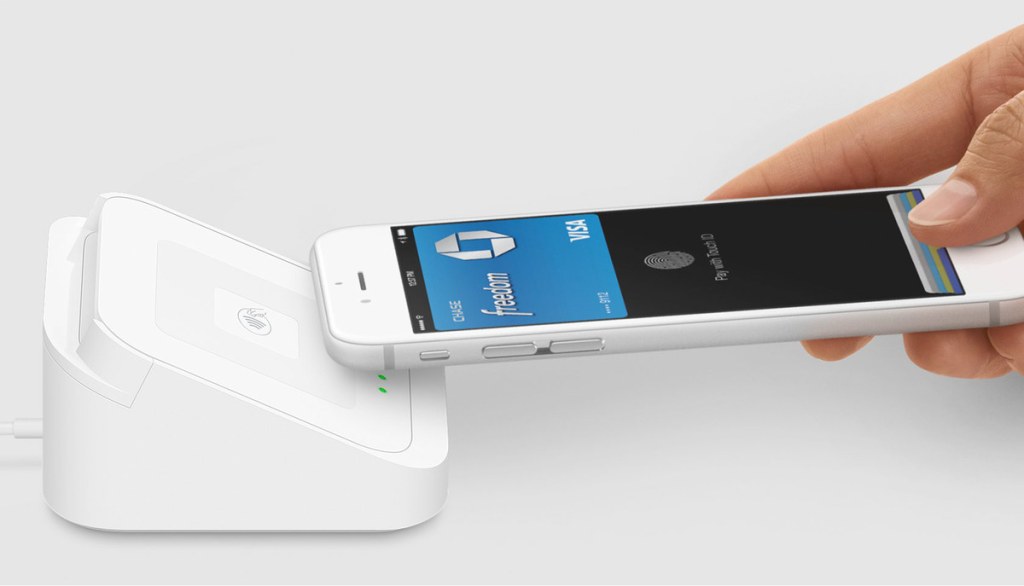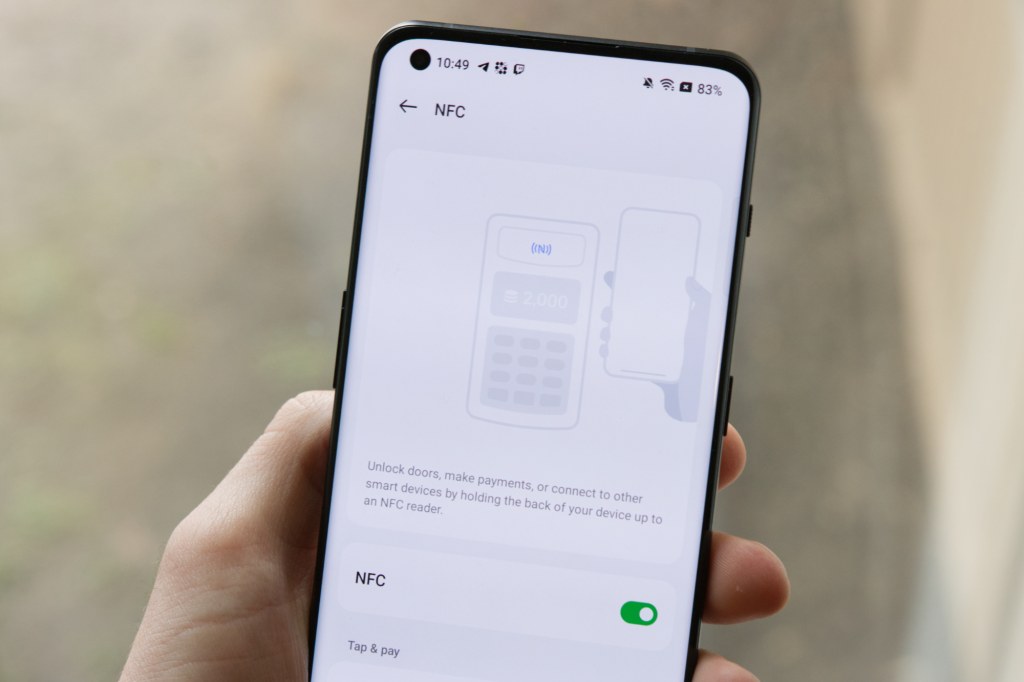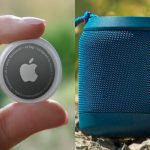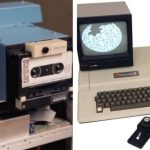Unlock Endless Possibilities With Mobile Devices Equipped With NFC Technology
Mobile Devices with NFC: Unlocking a World of Possibilities
Greetings, Readers! Today, we delve into the fascinating world of mobile devices with NFC (Near Field Communication). In this article, we will explore what NFC is, who uses it, when it is most commonly used, where it can be found, why it has gained popularity, and how it works. So get ready to unlock a world of possibilities with NFC technology!
Introduction
In this day and age, mobile devices have become an integral part of our lives. We rely on them for communication, entertainment, and even making payments. Near Field Communication, or NFC, is a feature that allows smartphones, tablets, and other devices to establish a wireless connection with each other and with NFC-enabled objects. It has revolutionized the way we interact with our devices and the world around us.
2 Picture Gallery: Unlock Endless Possibilities With Mobile Devices Equipped With NFC Technology


NFC works by using electromagnetic radio fields, allowing devices to communicate when they are in close proximity, typically within a few centimeters. This technology is versatile and can be used for a wide range of applications, including contactless payments, data transfer, and even unlocking doors.
Now that we have a basic understanding of NFC, let’s dive deeper into its various aspects.
What is NFC?
📱 NFC, or Near Field Communication, is a wireless communication technology that allows devices in close proximity to exchange information.

Image Source: welcomesoftware.com
NFC operates on the principles of radio-frequency identification (RFID) and enables the transfer of data between two NFC-enabled devices. It uses short-range wireless communication, making it ideal for secure transactions and quick information exchange.
With NFC, users can simply tap their devices together or bring them close to establish a connection. This seamless interaction has made NFC a popular choice for various applications.
Key Points:
NFC stands for Near Field Communication.
It enables wireless communication between devices in close proximity.
NFC is based on RFID technology.
Devices can establish a connection through a tap or close proximity.
Who Uses NFC?
👥 NFC technology is widely used by individuals, businesses, and organizations across various industries for its convenience and versatility.

Image Source: digitaltrends.com
1. Consumers: NFC has become a common feature in smartphones and wearable devices, allowing users to make contactless payments, share files, and access information with a simple tap. It has also found its way into transportation systems, enabling users to conveniently pay for fares.
2. Retailers: Many retailers have adopted NFC-enabled payment systems, allowing customers to make quick and secure transactions with their mobile devices. NFC also enables personalized marketing experiences, such as delivering targeted offers and loyalty rewards.
3. Healthcare: NFC technology is utilized in healthcare settings for patient identification, monitoring medication adherence, and tracking medical equipment. It streamlines processes, enhances patient safety, and improves efficiency in healthcare delivery.
4. Access Control: NFC-enabled access cards and systems are widely used in offices, hotels, and other facilities for secure entry and exit. NFC eliminates the need for physical keys or swipe cards, providing a more convenient and efficient solution.
These are just a few examples of the diverse range of users who benefit from NFC technology.
When is NFC Most Commonly Used?
⌚ NFC technology is commonly used in various situations and scenarios, offering convenient solutions in our daily lives.
1. Contactless Payments: NFC-enabled mobile devices allow users to make contactless payments at retail stores, restaurants, and other establishments. With a simple tap, transactions can be completed swiftly and securely.
2. File Transfer: NFC allows for quick and easy file sharing between devices. Whether you need to transfer photos, videos, or documents, NFC provides a seamless way to exchange data.
3. Public Transport: NFC technology has revolutionized the way we pay for public transportation. With NFC-enabled cards or mobile devices, users can effortlessly pay for their fares by tapping on card readers.
4. Smart Homes: NFC can be used to control various smart home devices. By tapping an NFC tag, users can activate specific settings, such as turning on lights, adjusting the thermostat, or playing music.
These are just a few examples of when NFC is commonly used. Its versatility makes it suitable for many applications.
Where Can NFC Be Found?
📍 NFC technology can be found in a wide range of devices and environments, making it readily accessible to users worldwide.
1. Smartphones and Tablets: NFC is a standard feature in many modern smartphones and tablets. It allows users to enjoy the benefits of NFC technology without the need for additional hardware.
2. Wearable Devices: NFC is increasingly incorporated into wearable devices, such as smartwatches and fitness trackers. Users can perform various tasks, such as making payments or unlocking doors, directly from their wearable devices.
3. Payment Terminals: NFC-enabled payment terminals can be found in numerous retail stores, restaurants, and businesses. These terminals allow for quick and secure contactless payments using NFC technology.
4. Public Transport Systems: Many public transport systems have adopted NFC-enabled ticketing systems. Users can tap their NFC-enabled cards or devices to pay for fares and seamlessly access transportation networks.
These are just a few examples of where NFC can be found. Its widespread adoption has made it easily accessible to users in various settings.
Why Has NFC Gained Popularity?
📈 NFC technology has gained immense popularity due to its numerous advantages and benefits.
1. Convenience: NFC offers a convenient way to make payments, share files, and access information. With just a tap, users can complete transactions or transfer data without the need for physical contact or additional steps.
2. Speed: NFC transactions and data transfers are incredibly fast. The close proximity required for NFC communication ensures quick and seamless exchanges, making it an ideal choice for time-sensitive tasks.
3. Security: NFC technology incorporates advanced security features, making it a secure option for payments and data transfers. The short-range communication limits the risk of interception or unauthorized access.
4. Versatility: NFC can be used for a wide range of applications, from making payments to controlling smart home devices. Its versatility has led to its adoption in various industries and sectors.
These advantages have contributed to the widespread popularity of NFC technology among users and businesses worldwide.
How Does NFC Work?
🔧 NFC technology operates through a combination of hardware and software components.
1. Hardware: NFC requires an NFC chip, which can be found in devices such as smartphones, tablets, and smartwatches. This chip enables communication and data transfer between NFC-enabled devices and objects.
2. Software: NFC functionality is supported by software, including operating systems and applications. These software components enable devices to recognize and utilize NFC technology.
3. Communication Modes: NFC supports three communication modes: Reader/Writer, Peer-to-Peer, and Card Emulation. These modes allow devices to perform various functions, such as reading NFC tags, transferring data between devices, and emulating contactless smart cards.
By combining these hardware and software components, NFC technology provides users with a seamless and efficient means of communication and interaction.
Advantages and Disadvantages of NFC
Advantages:
✅ Convenient and quick transactions
✅ Secure and encrypted communication
✅ Versatile applications
✅ Interoperability with existing contactless smart card infrastructure
✅ Low power consumption
Disadvantages:
❌ Limited range of communication
❌ Requires close proximity between devices
❌ Relatively slower data transfer compared to other wireless technologies
❌ Compatibility issues with older devices
❌ Vulnerable to interception if not properly secured
Frequently Asked Questions (FAQ)
Q1: Can I use NFC on my smartphone?
A1: Most modern smartphones come with NFC capabilities. Simply check your device’s specifications or settings to determine if it has NFC functionality.
Q2: Is NFC secure for making payments?
A2: Yes, NFC payments are secure. The technology incorporates encryption and authentication methods to ensure secure transactions.
Q3: Can I use NFC to transfer files between different smartphone brands?
A3: Yes, NFC file transfer is supported across different smartphone brands. However, some devices may have specific requirements or limitations.
Q4: Are NFC-enabled payment terminals widely available?
A4: NFC-enabled payment terminals are becoming increasingly prevalent in retail stores, restaurants, and businesses around the world.
Q5: Can I use NFC to unlock my car or house?
A5: Some cars and smart home systems support NFC unlocking. Check your specific device or system for NFC compatibility and setup instructions.
Conclusion
In conclusion, mobile devices with NFC have become invaluable tools in our technologically advanced world. NFC technology offers convenience, security, and versatility for a wide range of applications, from contactless payments to file sharing and access control. Its seamless communication and interaction capabilities have made NFC increasingly popular among consumers, retailers, healthcare providers, and many other industries.
So, embrace the possibilities that NFC brings and unlock a world of convenience and efficiency with your mobile devices!
Final Remarks
📝 The information provided in this article is intended to give readers a comprehensive understanding of mobile devices with NFC. It is important to note that NFC technology continues to evolve, and new applications and advancements may emerge in the future. Always consult the latest resources and official documentation for the most up-to-date information on NFC technology and its applications.
This post topic: Latest Technology Trends


